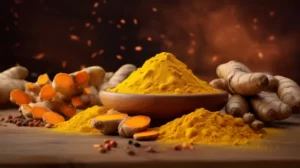Do you have pain and stiffness in your shoulder joint that makes it hard or impossible to exercise, keeps you awake at night, and stops you from enjoying your normal day-to-day activities? If so, you could be one of the many Americans who suffer from frozen shoulder or adhesive capsulitis.
Frozen shoulder is a condition where the inflammation in your shoulder joint gets so bad that it progressively limits the motion of the joint. It’s a downward spiral of increasing pain and swelling and decreasing movement that can go on for months, even years if left untreated.
It can be triggered by an injury, especially one that causes you to rely on a sling, or surgery, like of your heart or breast. It’s also associated with a range of medical conditions including diabetes, thyroid disease, Parkinson’s disease, and inflammatory disorders.
If you see your doctor for help, you’re likely to be put on a wide range of prescriptions from anti-inflammatories and pain medications to steroid injections, which come with dangers of infection, bleeding, and tendon rupture.
Even worse, should your doctor determine you require surgery for frozen shoulder, what’s commonly known as manipulation under anesthesia, you run the risk of not only the normal surgical side effects of pain, nausea, problems with the anesthetic and infection, you could also end up with a broken arm.
If you desperately need relief from your frozen shoulder pain but want to avoid the risks that come with medications and surgery, use the three steps below to fix your frozen shoulder naturally.
Step #1 – Decrease inflammation
Since frozen shoulder is an inflammatory condition, reducing your inflammation levels is key to finding relief. Eating an anti-inflammatory diet, rich in fruits and vegetables, wild-caught fish, and healthy fats along with healing bone broth can help.
Also, include supplements that decrease inflammation in your daily routine. Curcumin (100-500 mg daily), omega 3s from fish oil (1,000 mg per day), alpha-lipoic acid (300-600 mg per day), and Resveratrol (150-500 mg daily) have all been linked to lowered inflammation.
Step #2 – Heat and stretch
One of the most important aspects of recovery from frozen shoulder is to improve your movement. The easiest way to do this is to first heat up the joint. You can use a moist heating pad or take a warm shower or bath and then gently move your shoulder in small circles. Next, slowly walk your fingers up the wall in front of you to lift your shoulder and then walk back down.
Other stretches that are good for frozen shoulder include:
- Cross-body reach: Use your good arm to lift your affected arm at the elbow, and bring it up and across your body at a height where you feel the stretch but not severe pain. Hold for 15 to 20 seconds and repeat 10 to 20 times per day, working on reaching further across your body as your range of motion improves.
-
Towel stretch: Hold a towel (about 3 feet long) with one hand and drape it over your shoulder and down your back. If you’re stretching your right shoulder, the towel should be placed over your left shoulder and be held in your left hand. Reach behind your back with your other hand and grip the towel. Gently pull the towel up and allow your hand behind your back to move across and up your back. A gentle stretch should be felt in the front or side of your shoulder. Hold the position for 10 seconds, and then slowly release the stretch. Repeat 10 times, trying to pull your arm up your back a little further each time.
-
T-Stretch: Lie on your back with your knees bent. Make a “T-shape” by bringing your arms out to your sides and resting them on the floor. Rest for one minute. Repeat two to three times per day.
The key to all of these stretches is to be sure to move slowly and avoid sudden or jerking motions and not to do too much too soon. You want to feel slightly sore afterward, but the soreness should go away quickly and not leave you with residual pain.
Step #3 – Relax the muscles
Peppermint and lemongrass are natural muscle relaxants, and their essential oils can be rubbed into your shoulder joint to help bring relief. You can also soak in a warm bath with a cup of Epsom salt to stop the spasms brought on by inflammation.
Frozen shoulder limits your movement and your life. Use the three steps above to fix your frozen shoulder naturally and live shoulder pain-free.



